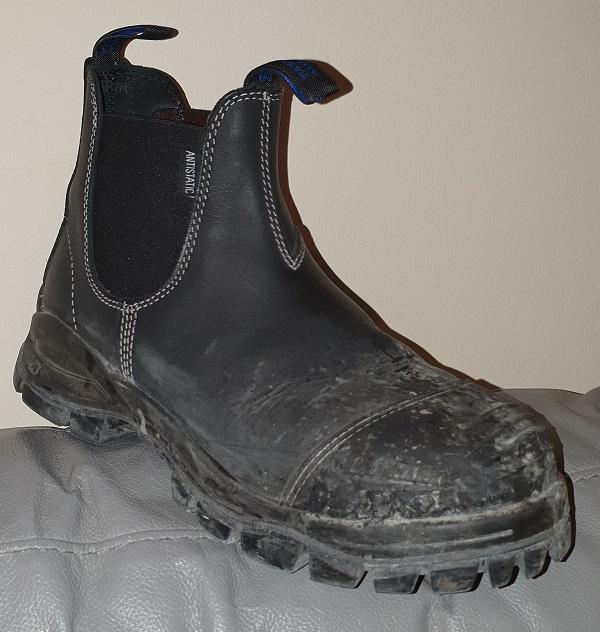Working long hours on your feet can be hard on the body, especially when it comes to your feet and legs. One of the most common complaints among workers is that their work boots make their legs tired. In this article, I will discuss the reasons why your work boots might be causing fatigue in your legs and what you can do to prevent it.
Poor fit: Ill-fitting work boots can cause a lot of discomfort and pain, leading to tired legs. Boots that are too tight or too loose can cause blisters, calluses, and other foot problems. When your foot is constricted in a tight boot, it can lead to cramping and fatigue in the muscles and tendons of your foot and leg. Similarly, boots that are too loose can cause your foot to slide around inside, leading to blisters and rubbing. This constant movement can also cause fatigue as your foot works harder to maintain stability. To ensure a proper fit, make sure to try on work boots with the same type of socks you will be wearing on the job. Walk around the store and test them out to make sure they feel comfortable. Also, make sure to check the size and width of the boot, and consider getting your feet measured before making a purchase. To prevent your work boots from causing fatigue in your legs, it’s important to make sure they fit well, provide enough support, have comfortable soles, sufficient padding, and to rotate the boots you wear. Additionally, make sure to take breaks and stretch your legs throughout the day. If you have persistent pain or discomfort in your legs, it’s important to see a healthcare professional.
Lack of support: Work boots that don’t provide enough support can cause fatigue in your legs. This is particularly true for those who spend a lot of time on their feet. When your feet and legs are not properly supported, it can cause strain on your muscles and tendons, leading to fatigue. In addition, without proper arch support, your feet may overwork to try to maintain balance, which can also lead to fatigue. Look for work boots with a sturdy and supportive sole, good arch support, and a comfortable and cushioned insole. Also, check for a heel counter, which will provide additional support for the back of your foot.
Uncomfortable soles: The soles of your work boots can play a big role in how comfortable they are. Hard soles can cause fatigue and pain in your legs, especially if you spend a lot of time standing on hard surfaces. Hard soles can also lack the ability to absorb shock and provide cushioning, which can lead to stress and strain on your feet and legs. Look for work boots with rubber or polyurethane soles, which provide good traction and shock absorption. Also, consider investing in a high-quality insole for additional cushioning.
Insufficient padding: Work boots that don’t have enough padding can cause fatigue in your legs. This is because they don’t provide enough cushioning to support your feet and legs. Without proper padding, the pressure from your body weight is concentrated on a small area of your foot, leading to discomfort and fatigue. Look for work boots with a cushioned insole and padded collar and tongue. Also, consider adding a supportive insole to your work boots for additional cushioning.
Wearing work boots for too long: Wearing work boots for extended periods of time can cause fatigue in your legs. This is particularly true if your work boots don’t provide enough support or cushioning. When you spend hours on your feet, your legs and feet are subject to a lot of stress and strain, which can lead to fatigue. Take breaks throughout the day to rest your feet and legs. Also, make sure to rotate your work boots, so that you are not wearing the same pair every day.
Not rotating your work boots: Rotating your work boots can prevent fatigue in your legs. By not wearing the same pair of boots every day, you can give your feet and legs a break, preventing fatigue and discomfort. Rotating your work boots also allows them to dry and air out properly, reducing the growth of bacteria and odor. Additionally, rotating your work boots can also prolong their lifespan, as they will not be worn down as quickly. Make sure to have more than one pair of work boots, so that you can rotate them throughout the week. Also, make sure to clean and properly store your work boots after each use, to ensure they are dry and ready for the next use.
In conclusion, work boots can cause fatigue in your legs if they don’t fit properly, lack support, have uncomfortable soles, insufficient padding, worn for too long, or not rotated. By taking the time to find the right pair of boots and taking care of them properly, you can help prevent fatigue and discomfort in your legs. If you’re experiencing persistent pain or discomfort, it’s important to see a healthcare professional.
References:
- Image reference: https://commons.wikimedia.org/wiki/File:Blundstone_BL_990.jpg


